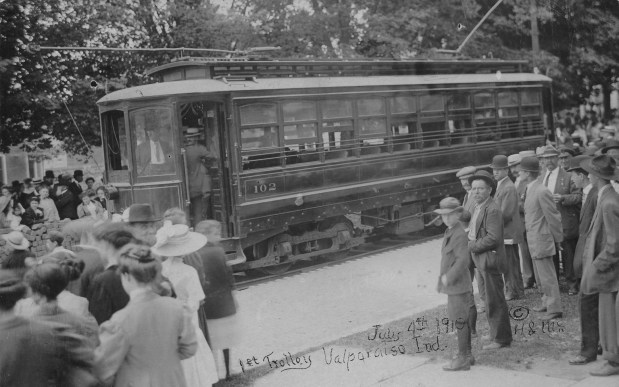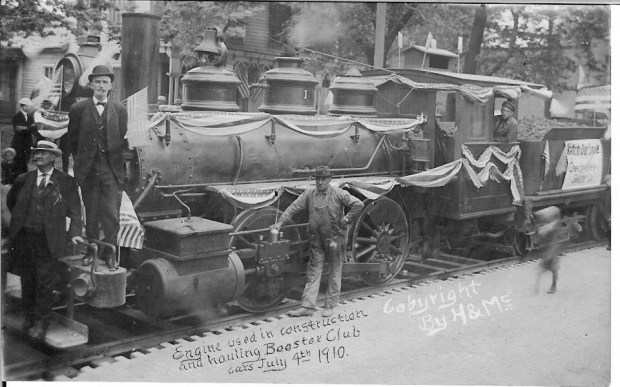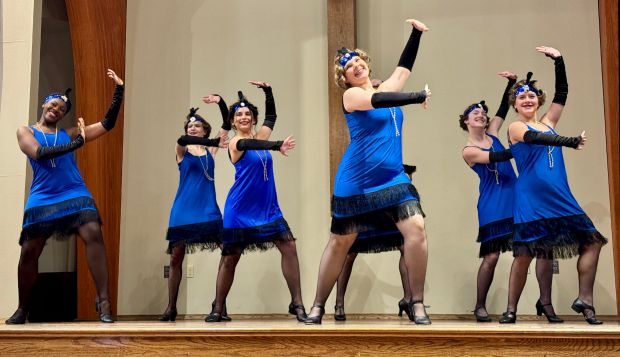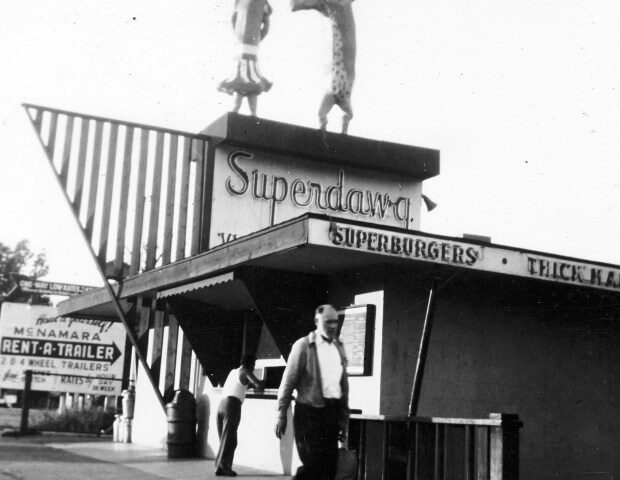From 1910 to 1938, the Valparaiso and Northern Interurban Railroad ran between Valparaiso and Gary. That story was told in words, music, dance and pictures on Sunday.
The Valparaiso Chain of Lakes Watershed Group and South Shore Brass Band partnered with the Indiana Ballet Theater and an assist from Porter County Historian Kevin Pazour for the event. The Porter County Museum’s exhibit on the rail line ends April 19.
The band played songs from that period, with dancers performing the Charleston, Brazilian polka and foxtrot.
Don Evans told stories about life along the interurban line, heavily aided by research and memories from Ed Seykowski.
Seykowski’s family moved to the west side of Long Lake in 1947, when he was 7 years old. He listened to stories of the good old days while fishing with the Brownbridge brothers on their pier.
The interurban was intended to become part of the Chicago to New York Electric Airline interurban system. The long-distance airline was abandoned before it was completed.
In Gary, the line ended at what later became the Post-Tribune building on Broadway. In Valparaiso, the end of the line was at Franklin Street and Lincolnway.
The rail cars zipped north along Calumet Avenue in Valparaiso to Woodville, a settlement in Liberty Township, then turned west to Gary. The building that served as a car barn now houses Valparaiso Animal Hospital.

The Valparaiso chain of lakes area became a prime vacation spot, Don Evans told the crowd at First Christian Church on Sunday.
“Folks loved the lake so much they wanted to spend each summer there. The first summer they brought tents, next summer lumber for an outhouse, and then a cottage for their lots,” he said.
At the same time came the rise of resorts along the beaches.
The Blackhawk Hotel on the east side of Flint Lake was the largest and had the most amenities, he said. Blackhawk Beach had a bathhouse and dance hall. The Woodmere subdivision includes the site where the hotel burned down, Evans said.

Other popular resorts included Edgewater Beach, Burlington Beach, North Shore Hotel, Sheridan Beach Resort and others.
One of the popular stops for the interurban was at County Road 600 North (Anderson Road) to walk down to the ferry landing to go to Long Lake Island pavilion and the Long Lake Hotel.
Access to Long Lake Island was with a pull ferry used before a road was built in 1939. Getting vehicles across on the ferry could be hazardous. “It is rumored that some Model T’s fell off the pull ferry and are still submerged somewhere in the lake along the ferry’s path,” Evans said.
Woodville was created to support the lumber business, with people flocking there from Gary, Chicago, LaPorte, South Bend and Chesterton. Woodville became a connecting point for trains to Chesterton, Gary and LaPorte as well as the B&O Railroad. A few houses survive, surrounded by farmland.

In the early 1920s, the interurban’s route wound through farmland, hauling milk cans for dairy farmers. “The product could go from the farm to the table in a matter of hours,” Evans said. “Farmers dropped off full milk cans at the nearest interurban station in the morning and picked up the empty cans in the evening. This business was very profitable for the interurban until about 1924. It is estimated that transferring milk brought $1,800 a month in the company every month, a very significant sum at that time.”
The last run of the interurban came in the spring of 1938. Ford’s Model T and the increasing popularity of the automobile, along with the Great Depression, led to the demise of the Valparaiso and Northern Interurban Railroad, along with many others.
“So what does the interurban right of way look like today? Most of the rails were torn up in the 1940s to make weapons for World War II; however, the railroad ties remained in place for a couple decades,” Evans said.
Doug Ross is a freelance reporter for the Post-Tribune.





